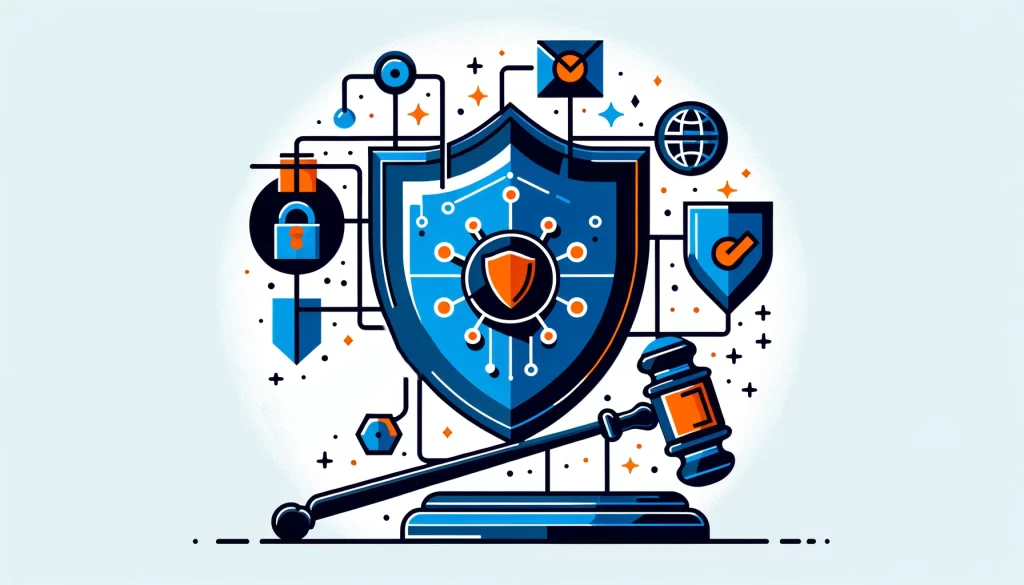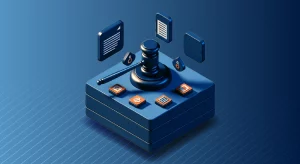
Security Governance

In today’s digital landscape, organizations face unprecedented challenges in securing their valuable data assets. With the proliferation of cloud storage, complex databases, and evolving cyber threats, implementing a robust security governance framework has become a critical priority. This article delves into the fundamentals of security governance, its importance, and practical strategies for establishing an effective program within your organization.
What is Security Governance?
Security governance is the framework that sets policies, procedures, and accountability measures to protect an organization’s information assets. It ensures confidentiality, integrity, and availability. It encompasses the management of security risks, compliance with regulatory requirements, and alignment with business objectives.
At its core, security governance aims to establish a unified approach to safeguarding data across the enterprise. Defining roles, responsibilities, and decision-making processes helps organizations identify and address security risks proactively. This also ensures that information flows smoothly within authorized boundaries.
Data Sources and Security Governance
Effective security governance requires a comprehensive understanding of the various data sources within an organization. These may include:
- Structured databases: Relational databases, data warehouses, and other structured data repositories.
- Unstructured data: Documents, emails, images, and videos stored in file systems or content management platforms.
- Cloud storage: Data residing in public, private, or hybrid cloud environments.
- Big data platforms: Distributed systems designed to handle massive volumes of structured and unstructured data.
Each data source presents unique security challenges and requires tailored governance approaches. For example, cloud storage necessitates robust access controls, encryption, and monitoring to prevent unauthorized access and data breaches. Similarly, large-scale data platforms demand detailed security measures to protect sensitive information while enabling authorized users to derive valuable insights.
Securing Files in Cloud Storage
Cloud storage has become a ubiquitous solution for storing and sharing files across organizations. However, the distributed nature of cloud environments introduces new security risks. To effectively govern file security in the cloud, consider the following best practices:
- Implement strong access controls: Enforce role-based access control (RBAC) to ensure that only authorized users can access specific files and folders. Use multi-factor authentication (MFA) to add an extra layer of security.
- Encrypt data at rest and in transit: Employ encryption mechanisms to protect files stored in the cloud. Use secure protocols like HTTPS and SSL/TLS for data transmission.
- Monitor and audit file access: Implement logging and monitoring solutions to track file access, modifications, and deletions. Regularly review audit logs to detect suspicious activities and potential security incidents.
Example:
Setting up access controls in Amazon S3 is easy. Let’s start by creating a bucket and giving certain permissions.
Create an S3 bucket:
aws s3 mb s3://my-secure-bucket
Define an access policy (policy.json):
{ "Version": "2012-10-17", "Statement": [ { "Sid": "AllowReadAccess", "Effect": "Allow", "Principal": { "AWS": "arn:aws:iam::123456789012:user/john" }, "Action": [ "s3:GetObject", "s3:ListBucket" ], "Resource": [ "arn:aws:s3:::my-secure-bucket", "arn:aws:s3:::my-secure-bucket/*" ] } ] }Apply the policy to the bucket:
aws s3api put-bucket-policy --bucket my-secure-bucket --policy file://policy.json
In this example, we created an S3 bucket. We also established a policy. This policy allows a specific IAM user named John to read from the bucket. The policy then applies to the bucket, ensuring that only authorized users can access the files stored within.
Securing Databases with Views
Databases often contain sensitive information that requires strict access controls and data protection measures. One effective technique for securing databases is the use of views. Views allow you to create virtual tables that provide a restricted and customized representation of the underlying data.
Here’s how views can enhance database security:
- Data abstraction: Views enable you to expose only the necessary columns and rows to users, hiding sensitive or irrelevant information.
- Access control: Granting permissions on views, not base tables, limits user access to specific data subsets based on roles and responsibilities.
- Data integrity: Views can enforce business rules, data consistency, and validation checks, ensuring that users interact with reliable and accurate information.
Example:
Creating a secure view in PostgreSQL
Let’s consider a scenario where we have a “customers” table containing sensitive information. We want to create a view that provides limited access to specific columns:
Create the “customers” table:
CREATE TABLE customers ( id SERIAL PRIMARY KEY, name VARCHAR(100), email VARCHAR(100), phone VARCHAR(20), address VARCHAR(200) )
Insert sample data:
INSERT INTO customers (name, email, phone, address) VALUES ('John Doe', 'john@example.com', '1234567890', '123 Main St'), ('Jane Smith', 'jane@example.com', '9876543210', '456 Elm St');Create a secure view:
CREATE VIEW customer_info AS SELECT id, name, email FROM customers;
Grant permissions on the view:
GRANT SELECT ON customer_info TO user1;
In this example, we created a “customers” table with sensitive information. Then, we defined a view called “customer_info” that includes only the “id”, “name”, and “email” columns. Finally, we granted SELECT permissions on the view to a specific user (user1).
This ensures that the user can only view specific columns. It helps protect private information like phone numbers and addresses.
Creating a Security Governance Framework
Establishing a comprehensive security governance framework requires careful planning and execution. Here are the key steps to create an effective security governance program:
- Define security objectives: Clearly articulate the organization’s security goals and align them with business objectives. This includes identifying critical assets, defining risk tolerance levels, and establishing key performance indicators (KPIs) to measure the effectiveness of security controls.
- Develop policies and procedures: Create a set of policies and procedures that outline the organization’s security requirements, roles and responsibilities, incident response plans, and compliance obligations. Make sure to regularly review and update these policies to stay current with evolving threats and regulatory changes.
- Assign roles and responsibilities: Identify key stakeholders and assign specific roles and responsibilities for implementing and maintaining the security governance framework. This may include a Chief Information Security Officer (CISO), security managers, IT administrators, and business unit representatives.
- Implement security controls: Deploy technical and administrative controls to protect data assets and mitigate risks. This may include access controls, encryption, network segmentation, vulnerability management, and employee training programs.
- Monitor and audit: Establish monitoring and auditing processes to continuously assess the effectiveness of security controls and detect potential security incidents. Regularly review audit logs, conduct vulnerability assessments, and perform penetration testing to identify and address weaknesses in the security posture.
- Communicate and train: Engage employees at all levels through regular communication and training programs. Educate them about security best practices, policies, and their roles in maintaining a secure environment. Foster a culture of security awareness and encourage reporting of suspicious activities.
- Continuously improve: Make sure to update security rules regularly to match new threats, laws, and business needs. Conduct post-incident reviews to identify lessons learned and implement necessary improvements.
Establish a strong security governance framework by customizing these steps to fit your organization’s unique needs. This will help protect your data assets and ensure alignment with your business goals.
Conclusion
In today’s data-driven world, security governance is no longer an option but a necessity. By implementing a comprehensive security governance framework, organizations can effectively manage security risks, ensure compliance, and safeguard their valuable data assets. Security governance creates a strong base for protecting information from evolving threats. Setting up policies, procedures, access controls, monitoring, and making continuous improvements accomplishes this.
Security governance requires continuous effort from all employees, not just a one-time job. Organizations should raise awareness, collaborate across departments, and stay vigilant to protect against cyber threats and maintain trust.
Partnering with a trusted provider like DataSunrise can make a significant difference in implementing security governance. DataSunrise offers exceptional and flexible tools for data management, including security, audit rules, masking, and compliance. Their group of specialists is committed to helping companies understand security rules and reach their data protection goals.
Participate in an online demonstration with the DataSunrise team. See firsthand how their solutions can enhance your security measures. Empower yourself to fully embrace the digital era with confidence.
